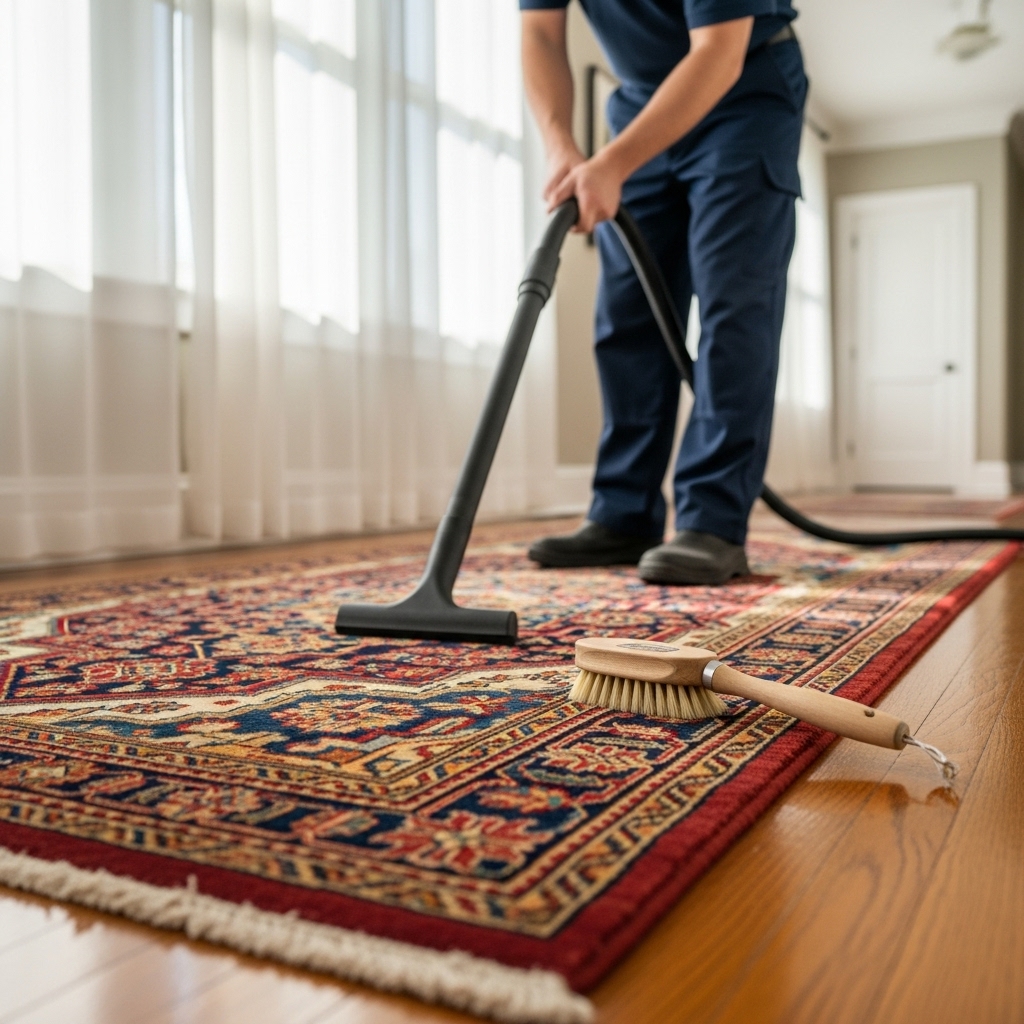Safeguarding Your Oriental Rugs: Expert Tips for Elizabeth, NJ Homes
True Oriental rugs—often hand-knotted with wool, silk, or a wool-silk blend—are works of art designed to endure. Their beauty lies in the harmony of fiber, dye, and craftsmanship. To preserve them, you need methods that respect all three. Whether you display a family heirloom in the living room or rotate seasonal runners in a hallway, proper care combines steady home habits with periodic professional attention. In the opening moments of that plan, it helps to understand what complete rug cleaning entails, how technicians test for dye stability, and why controlled drying is as important as the wash itself.
Elizabeth, New Jersey brings its own realities to the equation: humid summers, salty winter slush tracked indoors, and a blend of historic homes with narrow stairways. A durable preservation plan recognizes those variables and adapts accordingly. The goal is to protect fiber integrity, maintain crisp design lines, and keep colors vibrant without forcing outcomes that might risk the textile.
Know Your Fiber and Construction
Oriental rugs vary widely. Most are wool on a cotton foundation; some are all-wool; others incorporate silk for sheen and fine detail. Certain modern pieces include viscose or rayon—fibers that look luxurious but lack the resilience of wool and can lose strength when wet. Construction matters, too. Hand-knotted rugs behave differently from hand-tufted or machine-made pieces. Those differences guide everything from vacuuming technique to wash method.
Before cleaning, technicians check for colorfastness. They may dampen a white cloth with a mild solution and test inconspicuous areas. If dye migrates, they will adjust pH, water temperature, and flow to protect the artwork woven into the pile. This pre-testing is where professional expertise shines—understanding how to lower risk without sacrificing soil removal.
Home Care Habits That Matter
- Vacuum with care: Use a suction-only tool or a beater bar on its gentlest setting. Aggressive agitation can fuzz wool tips, disturb knots, and pull fringe into the brush.
- Rotate regularly: Quarterly rotation evens out wear patterns and sun exposure, keeping fields and borders uniform.
- Mind the pad: A quality underlay reduces movement, cushions impact, and protects floors. Choose one that’s compatible with hardwood finishes common in Elizabeth homes.
- Manage light: Sheer window treatments soften UV exposure, slowing fade without sacrificing daylight.
- Blot spills immediately: Use clean, white towels and press firmly to lift moisture. Avoid scrubbing, which can distort pile and spread dyes.
Consistency prevents the slow, invisible damage that accumulates between professional visits. It also makes each wash more effective because soils haven’t compacted deep in the foundation.
Professional Processes Worth Seeking
Look for providers who begin with thorough dry soil removal. Wool fibers have microscopic scales that trap particulates; removing them before wet work is essential. From there, the best method depends on fiber and dye behavior. Traditional hand-knotted wool often benefits from a full wash with controlled rinsing and flat, supported drying. Silk elements call for cooler temperatures, gentle flow, and extra protection against stretching.
Fringe work deserves special attention. Cotton fringes can discolor, wick soils, and tangle. Post-wash detailing brightens and aligns the tassels without over-bleaching, which can weaken fibers. Ask how fringe is handled and whether the team uses separate chemistry tailored to cellulose fibers.
Elizabeth, NJ Considerations
Seasonal humidity changes affect drying speed and stability. Facilities with dehumidification and balanced airflow keep the foundation flat and prevent slow-dry issues like browning. In winter, controlling warmth avoids overdrying that can make wool feel brittle to the touch. Rug transport in dense urban areas also calls for protective wrapping and two-person handling to avoid scuffs on doorframes or stair rails.
Road grit and de-icing residues are realities of winter. These particulates can be mildly abrasive. Routine vacuuming and strategic runners at entryways keep grit from grinding into pile tips, preserving the rug’s luster between washes.
Stain and Spill Strategy
Immediate action is the secret to graceful aging. Blot gently but decisively, working from the outside in. If a spill has pigment—like coffee or wine—continue blotting with fresh dry towels to lift as much as possible before introducing any moisture. Avoid household spotters with high alkalinity or oxidizers that can disrupt dyes. When in doubt, stop and call a specialist for guidance tailored to your fiber type.
Protein-based stains (from foods or pet accidents) require careful handling. Enzyme products can help, but dosage, pH, and dwell time must be controlled to avoid collateral dye effects. Professionals often prefer targeted, low-residue solutions that rinse cleanly and protect the hand of the wool.
Common Missteps to Avoid
- Over-aggressive vacuuming with a stiff beater bar on high: This can fuzz wool, distort pile, and prematurely wear fringe.
- Scrubbing spots: Friction can mat fibers and push stains deeper.
- Soaking on wood floors: Moisture can migrate and cause tannin stains underneath, telegraphing up into the rug.
- Using colored towels: Dyes from towels can transfer under pressure and moisture.
- Hanging heavy, wet rugs: This can stretch the foundation and warp the design.
Gentle, methodical care preserves structure and aesthetics. If you’re unsure whether a method is safe, assume it isn’t until a professional confirms otherwise.
Choosing the Right Professional
Ask pointed questions: How do you test for dye stability? What is your plan if a test shows instability? Do you offer off-site washing with controlled drying for hand-knotted rugs? Can you detail your dry soil removal process? Listen for specifics—times, sequences, and contingencies. Confidence and clarity suggest deep experience with valuable textiles.
Request documentation. Before-and-after photos, measurement notes, and condition reports are standard for high-caliber work. They build trust and help you plan future maintenance such as rotation schedules or protective treatments for high-traffic spaces.
Preserving Value Over Time
Oriental rugs reward steady attention. Minor repairs, like securing side cords or reweaving small losses, prevent larger restorations later. Professional cleaning restores color contrast, buoyancy, and the subtle sheen that gives hand-knotted pieces their life. Over many years, a thoughtful maintenance rhythm can turn a rug from a mere furnishing into a treasured legacy.
If a rug lives under dining chairs or in a busy hallway, consider a protector tailored to wool. It won’t prevent all staining, but it can slow absorption and make blotting more effective. Pair that with scheduled rotations and a quality pad to distribute stress across the field and borders.
Frequently Asked Questions
Q: How often should an Oriental rug be professionally cleaned? A: It depends on traffic, soil load, and environmental factors. Busy living areas need more frequent attention than rarely used guest rooms. A professional can align timing with your rug’s unique conditions.
Q: Are silk rugs safe to wash? A: Yes, with controlled methods. Cooler temperatures, gentle flow, and careful drying protect luster and structure. Silk demands patience and precision rather than force.
Q: What if dyes bleed during cleaning? A: Pre-testing identifies risks, and technicians adjust pH, temperature, and rinsing to minimize movement. If dye migration remains a possibility, a specialist will set expectations and proceed cautiously.
Q: Can moth damage be prevented? A: Regular use, vacuuming, and occasional professional inspection help. For stored rugs, clean them first, roll with breathable materials, and consider moth deterrents.
Q: Is in-home cleaning okay for hand-knotted pieces? A: Often, off-site washing is preferred to control water flow and drying. However, some situations allow cautious in-home work for sturdy rugs with stable dyes.
Q: What’s the safest way to handle fringes? A: Avoid vacuuming them directly. Lift the vacuum head slightly or use a hose attachment. Leave deep cleaning and whitening to professionals who can treat cellulose fibers properly.
Creating a Practical Routine in Elizabeth
Humidity swings and urban grit present everyday challenges, but steady habits conquer them. Use entry mats to capture particles, rotate rugs, and schedule periodic inspections. If a rug looks dull despite vacuuming—or if fringes gray and tangle—professional dusting and wash can reset the baseline. Halfway through building your care plan, take a moment to identify the specialists who can handle complex dye systems and fragile fibers; your shortlist should include teams known for meticulous rug cleaning and true flat, controlled drying.
Ready to Protect Your Heirlooms?
Oriental rugs deserve patience and skilled hands. With the right partner, colors stay crisp, pile remains buoyant, and the story woven into each knot continues. When you’re ready to plan a tailored preservation strategy—inspection, wash, drying, and periodic review—reach out to trusted professionals who respect heritage and household realities. Begin with experts who understand fiber, dye, and construction and who offer comprehensive rug cleaning for Elizabeth homes.

